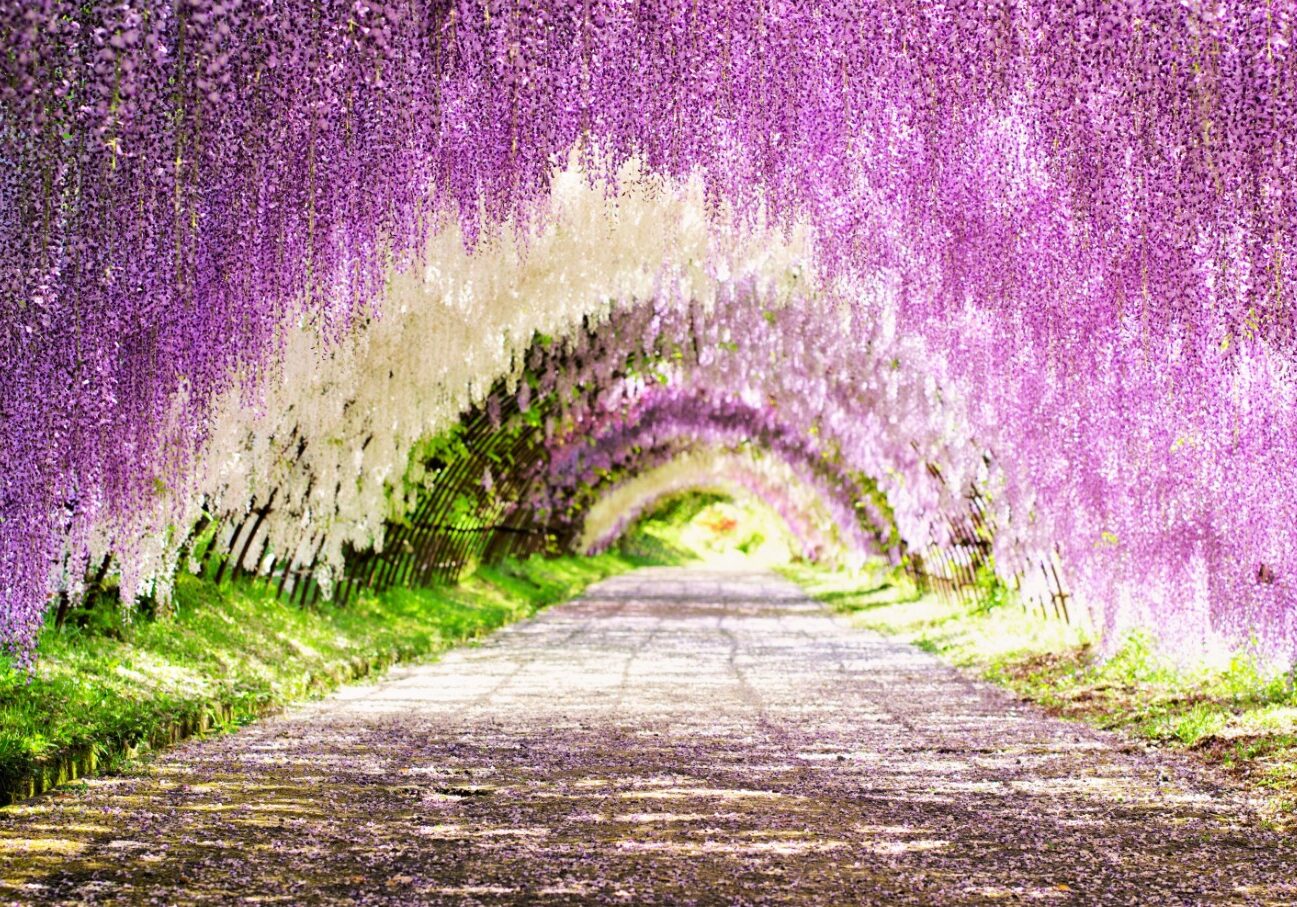
Wisteria
Wisteria is a genus of flowering plants in the legume family, Fabaceae (Leguminosae). The genus includes four species of woody twining vines that are native to China, Japan, Korea, Vietnam, southern Canada, the Eastern United States, and north of Iran.
They were later introduced to France, Germany and various other countries in Europe. Some species are popular ornamental plants. The genus name is also used as the English name, and may then be spelt 'wistaria'. In some countries in Western and Central Europe, Wisteria is also known by a variant spelling of the genus in which species were formerly placed, Glycine. Examples include the French glycines, the German Glyzinie, and the Polish glicynia.[citation needed]
bOTANY
Study of WISTERIA
The flowers have drooping racemes that vary in length from species to species. W. frutescens (American wisteria) has the shortest racemes, 5–7 centimetres (2.0–2.8 in). W. floribunda (Japanese wisteria) has the longest racemes, 90 centimetres (35 in) in some varieties and 120 centimetres (47 in) or 200 centimetres (79 in) in some cultivars.
The flowers come in a variety of colors, including white, lilac, purple, and pink, and some W. brachybotrys (Silky wisteria) and W. floribunda cultivars have particularly remarkable colors. The flowers are fragrant, and especially cultivars of W. brachybotrys, W. floribunda, and W. sinensis are noted for their sweet and musky scents. Flowering is in spring (just before or as the leaves open) in some Asian species, and in mid to late summer in the American species.


Seeds and seedpods of Wisteria floribunda (Japanese wisteria). The seeds of all Wisteria species contain high levels of the wisterin toxin and are especially poisonous.
Wisterias climb by twining their stems around any available support. W. floribunda (Japanese wisteria) twines clockwise when viewed from above, while W. sinensis (Chinese wisteria) twines counterclockwise. This is an aid in identifying the two most common species of wisteria. They can climb as high as 20 m (66 ft) above the ground and spread out 10 m (33 ft) laterally. The world's largest known wisteria is the Sierra Madre Wisteria in Sierra Madre, California, measuring more than 1 acre (0.40 ha) in size and weighing 250 tons. Planted in 1894, it is of the 'Chinese lavender' variety.
The leaves are alternate, 15 to 35 cm long, pinnate, with 9 to 19 leaflets.
Art and symbolism
In ancient Chinese and Japanese culture.
Wisteria is a flower with cultural significance in Japan and China, and is also featured in the Victorian language of flowers.
The wisteria flower carries symbolism that was important in Ancient Japan and Ancient China. In both societies, artworks like woodblock prints and tapestries showcased abundant wisteria to illustrate prosperity. Wisteria is featured in many traditional Japanese and chinese art forms, including woodblock prints, stained glass, and paintings. The flower and the color wisteria were considered symbolic of sophistication, wisdom, and long life.


Japanese Culture
In Japanese culstures, Wisteria is used as a popular motif in family crests, or mon, and was used by the Fujiwara clan. Sagari fuji mon (Wisteria mon)
Wisteria and their racemes have been widely used in Japan throughout the centuries and were a popular symbol in mon (family crests) and heraldry. Wisteria is one of the five most commonly used motifs in the mon, and there are more than 150 types of wisteria mon. Because of its longevity and fertility, wisteria was considered an auspicious plant and was favored as a mon, and was adopted and popularized by the Fujiwara clan as their mon.
Festivals
In Japan, April 21 to May 6 is the time of the Fuji Matsuri, or “Wisteria Festival.” During the festival, traditional music and dance are performed at the Kameido Tenjin shrine on the outskirts of Tokyo (traditional name Edo). Fuji is the Japanese word for “wisteria,” not to be confused with Mount Fuji, which has the same Kanji base as wisteria. Wisteria is a central character in festivals, symbolizing nature's resilience.
Like for example during "Hanami" Wisteria blossoms are viewed during this special flower viewing ceremony


Poetry
Wisteria is a subject in the oldest known classical Japanese poetry collection, Manyoshu.
Kabuki dance
One popular dance in kabuki known as the Fuji Musume (or 'The Wisteria Maiden'), is the sole extant dance of a series of five personifying dances in which a maiden becomes the embodiment of the spirit of wisteria.
The famous Kabuki dance Fuji Musume (Wisteria Maiden) is centered around wisteria blossoms and unrequited love.








